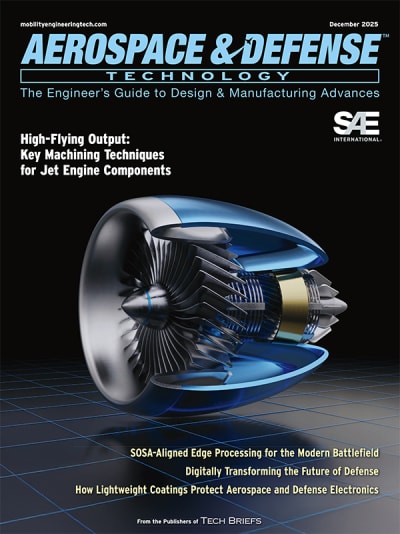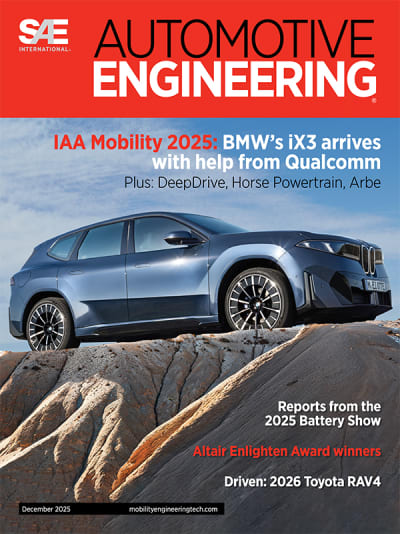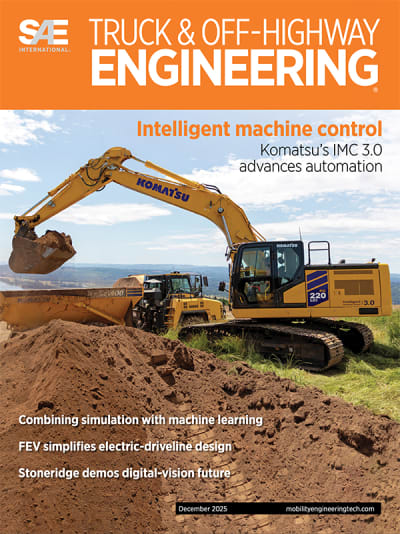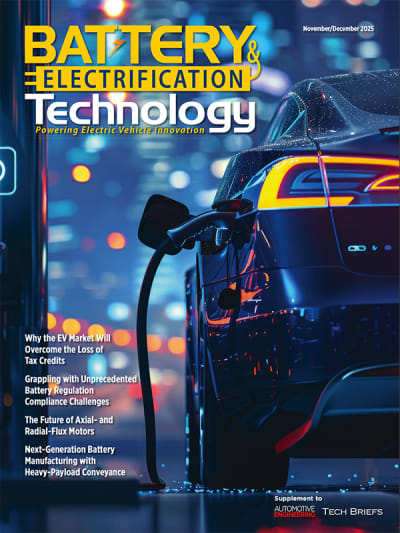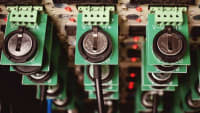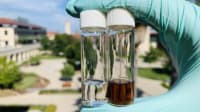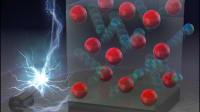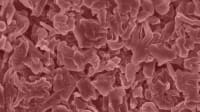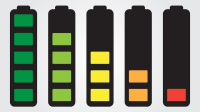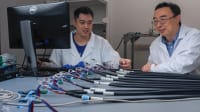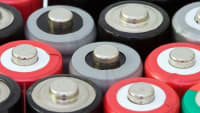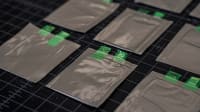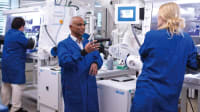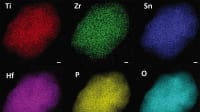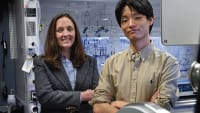Better Texture for Better Batteries
A new battery innovation looks at an overlooked attribute — the texture of metal —to improve performance.
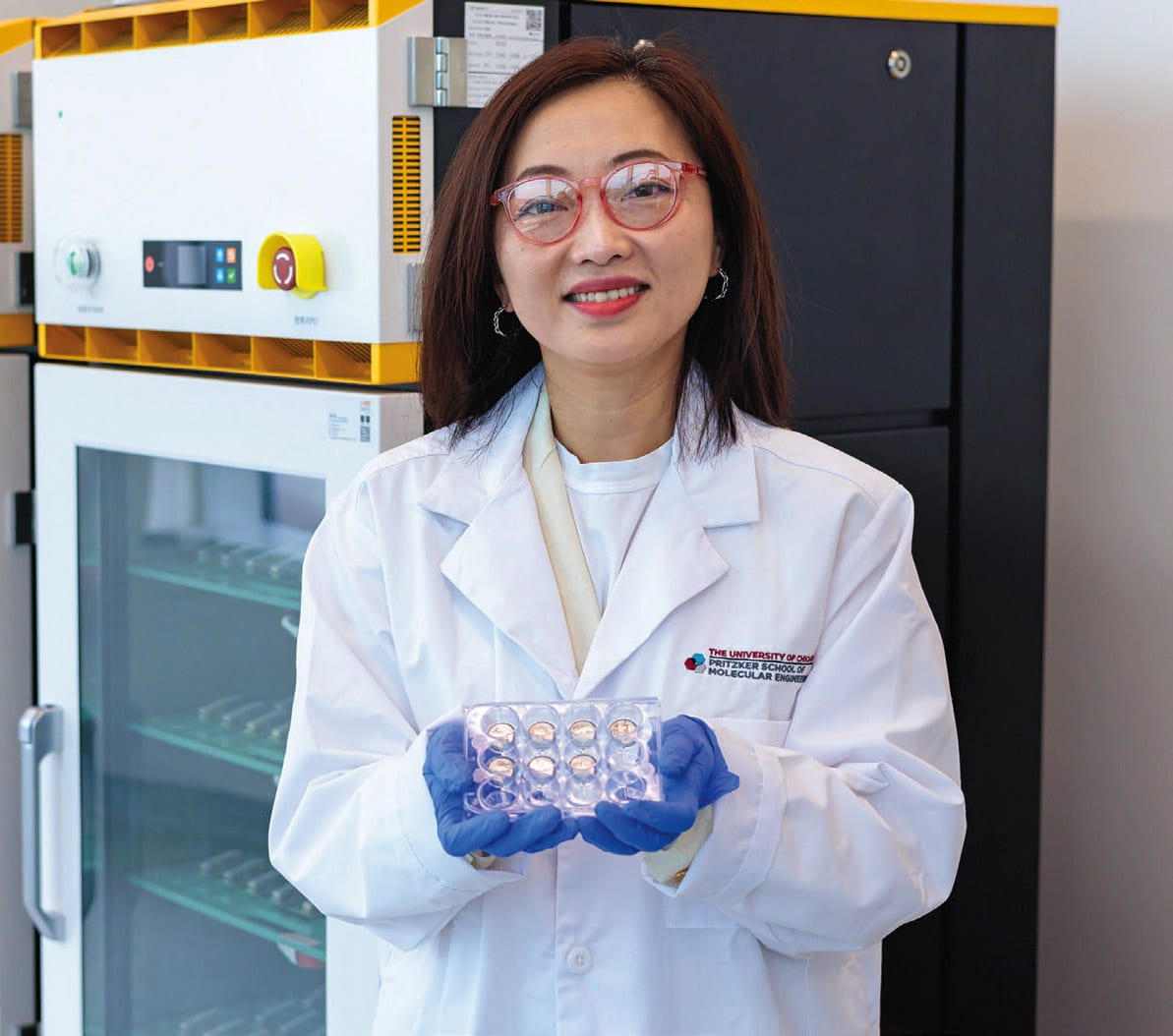
To create the new batteries needed for EVs, mobile devices, and renewable energy storage, researchers have explored new materials, new designs, new configurations, and new chemistry. But one aspect — the texture of the metals used — has been historically overlooked.
“Soft metals like lithium and sodium have excellent properties for being batteries’ negative electrodes, with lithium considered as an ultimate anode material for future high-energy rechargeable batteries,” said UChicago PME Professor Shirley Meng, the Liew Family Professor in Molecular Engineering. “There is a gap in understanding how the grain orientation, also known as the texture, impacts rechargeable metal battery performance.”
A new paper from Meng’s Laboratory for Energy Storage and Conversion and industry partner Thermo Fisher Scientific broke through that barrier, demonstrating that improving the metal’s texture greatly improved performance. The work was published in the journal Joule.
“In our work, we discovered that adding a thin layer of silicon between the lithium metal and the current collector helps create the desired texture,” said UChicago PME Research Associate Professor Minghao Zhang, the first author of the new work. “This change improved the battery’s rate capability by nearly ten times in all-solid-state batteries using lithium metal.”
The ideal texture for a battery anode is one where atoms can quickly move along the surface plane. This fast movement helps the battery charge and discharge faster. “Since batteries with lithium or sodium metal rely on the textures for favored rate capability, the team wondered if tweaking the texture of soft metals could improve power densities,” Zhang said.
Researching this, required getting past a hurdle in microscopy. To study the material, the group coupled milling within a plasma focused ion beam-scanning electron microscope (PFIB-SEM) with electron backscatter diffraction (EBSD) mapping. Together, the two techniques enabled studying the texture in new ways.
“Collecting texture information on soft metals is challenging, primarily due to difficulties in accessing the area of interest and the lithium and sodium metal’s reactivity,” said study co-author Zhao Liu, Senior Market Development Manager of Thermo Fisher Scientific, which is a founding member of the UChicago Energy Transition Network. “The PFIB-EBSD combination is well-suited for this study, as PFIB can effectively access the area of interest within the cell stack, producing a high-quality surface with minimal defects, while EBSD provides detailed texture information on the soft metal.”
The researchers’ next challenge is to lower the pressure used during testing from five megapascals (MPa) to one MPa, the current industry standard for commercially available batteries. They also plan to study the impact of texture on sodium, which Meng has long studied as an inexpensive, readily available alternative to lithium.
“Because we now understand how the texture forms in soft metals, we predict that sodium metal will prefer to have texture for fast atomic diffusion,” Zhang said. “This means that using sodium as the battery’s anode in all-solid-state batteries could lead to a big breakthrough in future energy storage.”
For more information, contact Paul Dalling at
Top Stories
INSIDERLighting Technology
![]() Using Ultrabright X-Rays to Test Materials for Ultrafast Aircraft
Using Ultrabright X-Rays to Test Materials for Ultrafast Aircraft
INSIDERManufacturing & Prototyping
![]() New 3D-Printable Nanocomposite Prevents Overheating in Military Electronics
New 3D-Printable Nanocomposite Prevents Overheating in Military Electronics
INSIDERDefense
![]() F-22 Pilot Controls Drone With Tablet
F-22 Pilot Controls Drone With Tablet
Technology ReportAR/AI
![]() Talking SDVs and Zonal Architecture with TE Connectivity
Talking SDVs and Zonal Architecture with TE Connectivity
INSIDERManufacturing & Prototyping
![]() New Defense Department Program Seeks 300,000 Drones From Industry by 2027
New Defense Department Program Seeks 300,000 Drones From Industry by 2027
INSIDERAerospace
![]() Anduril Completes First Semi-Autonomous Flight of CCA Prototype
Anduril Completes First Semi-Autonomous Flight of CCA Prototype
Webcasts
Test & Measurement
![]() SAE Automotive Engineering Podcast: Additive Manufacturing
SAE Automotive Engineering Podcast: Additive Manufacturing
Information Technology
![]() A New Approach to Manufacturing Machine Connectivity for the Air Force
A New Approach to Manufacturing Machine Connectivity for the Air Force
Automotive
![]() Optimizing Production Processes with the Virtual Twin
Optimizing Production Processes with the Virtual Twin
Power
![]() EV and Battery Thermal Management Strategies
EV and Battery Thermal Management Strategies
Manufacturing & Prototyping
![]() How Packet Digital Is Scaling Domestic Drone Battery Manufacturing
How Packet Digital Is Scaling Domestic Drone Battery Manufacturing
Automotive
![]() Advancements in Zinc Die Casting Technology & Alloys for Next-Generation...
Advancements in Zinc Die Casting Technology & Alloys for Next-Generation...

